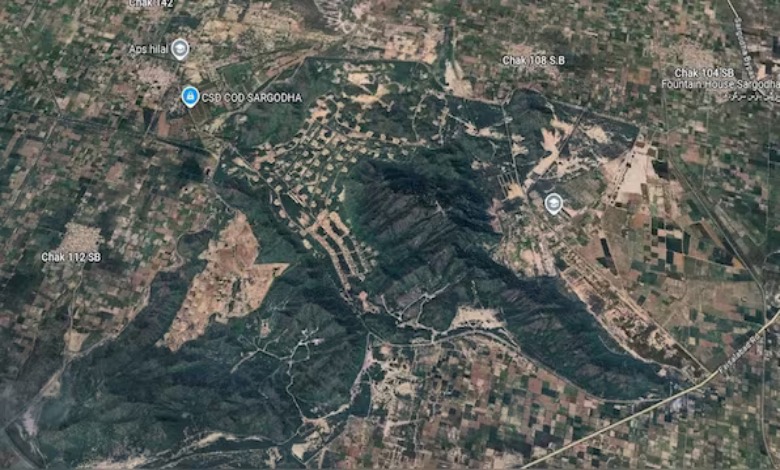
New satellite imagery appears to show that India struck Pakistan’s highly sensitive, nuclear-linked Kirana Hills facility during “Operation Sindoor” in May, despite official denials from New Delhi. The analysis, conducted by geo-intelligence expert Damien Symon, reveals evidence of a missile impact and damage at the site, reigniting questions about the full scope of India’s retaliatory strikes.
The images, captured by Google Earth in June 2025, show what Symon identifies as a “munition impact scar” in the Kirana Hills area of Pakistan’s Sargodha district. On the social media platform X, Symon also highlighted corresponding images of the nearby Sargodha airbase, which show recently repaired runways, suggesting it was also damaged in the Indian operation.
Operation Sindoor and Official Denials
India launched Operation Sindoor on the night of May 9-10 as a retaliation for the April 22 terror attack in Pahalgam, Jammu and Kashmir, which killed 26 people. The Indian Air Force (IAF) reportedly used about 15 BrahMos missiles and other precision-guided munitions to target high-value Pakistani military sites, damaging 11 of the country’s 13 major airbases.
Kirana Hills is a heavily fortified area widely believed to be a key part of Pakistan’s nuclear weapons infrastructure, housing underground storage facilities and sites used for subcritical nuclear tests in the 1980s. Its proximity to the Sargodha (now Mushaf) airbase enhances its strategic importance.
Despite speculation at the time, the Indian government officially denied hitting the site. At a press briefing on May 12, Director General of Air Operations, Air Marshal A.K. Bharti, responded sarcastically to a question about Kirana Hills: “Thank you for telling us that Kirana Hills houses some nuclear installations. We did not know about it. We have not hit Kirana Hills”. His slight smile during the denial went viral, fueling public debate over whether the strike had actually occurred.
Evidence and Implications
The new satellite imagery gives weight to the speculation that India did, in fact, strike the sensitive area. While Symon noted the impact was on “one side of a hill with nothing of value in its immediate vicinity” and likely a “warning strike,” the visual evidence contradicts the IAF’s public stance. The rapid repair of the Sargodha runways also indicates the base’s high strategic value and reinforces the assessment that it was successfully targeted.
The scale of the damage across Pakistan’s military infrastructure, as suggested by the imagery, indicates the country’s forces may have been caught by surprise. Observers have suggested that the extent of the damage may have compelled Pakistan to seek the swift ceasefire that was established through Director General of Military Operations (DGMO)-level talks.




